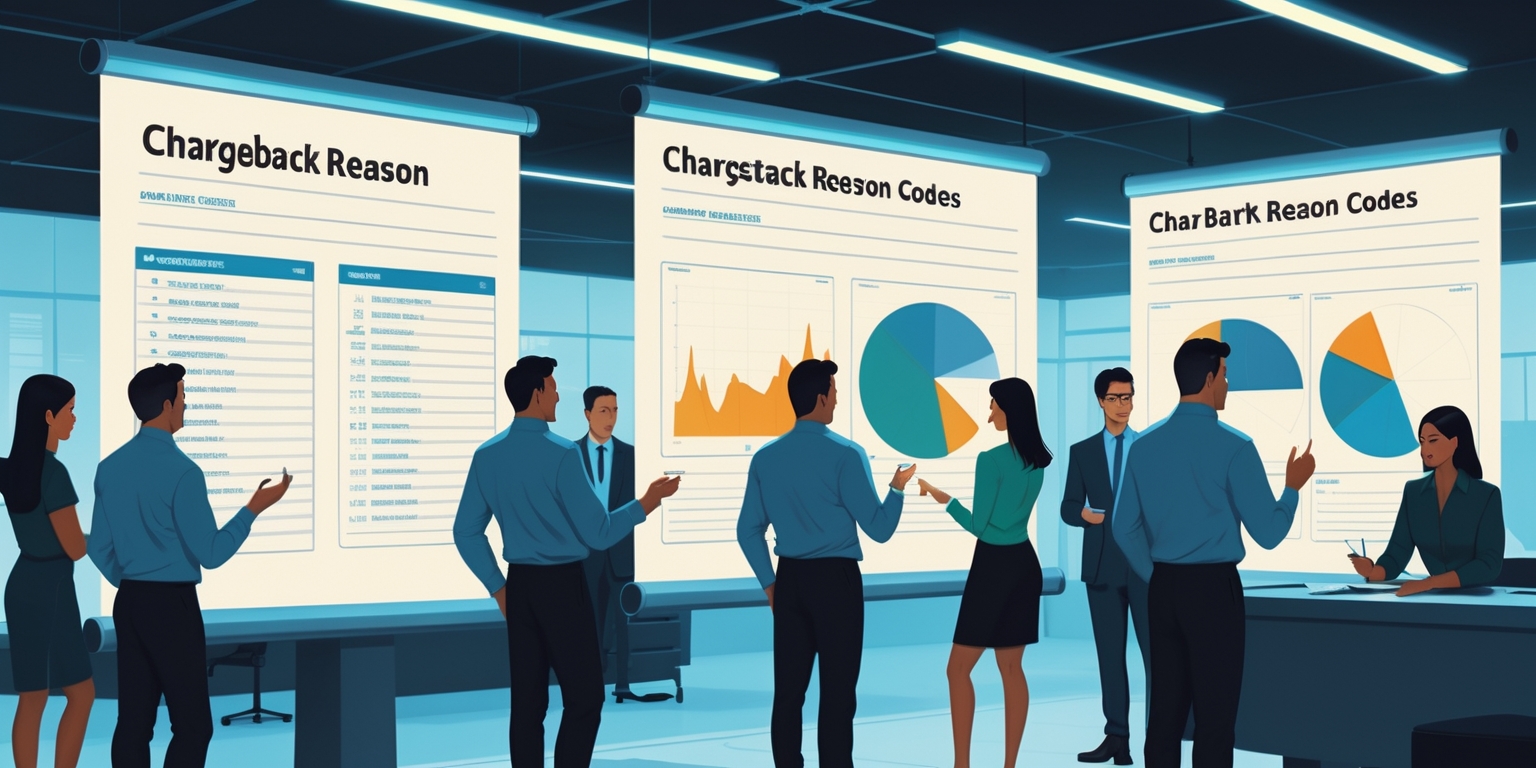As a business owner who’s dealt with countless chargebacks, I’ve learned that understanding these cryptic codes is crucial to protecting your bottom line.
When I received my first chargeback notification with a mysterious “AA” code from Discover, I was confused and frustrated. What did this code mean? Why was my customer disputing the charge? Most importantly, how could I prevent this from happening again?
In this comprehensive guide, I’ll walk you through everything you need to know about Discover chargeback reason codes. I’ll explain what these codes mean, why they matter for your business, and how you can use this knowledge to fight illegitimate chargebacks and prevent future disputes.
What Are Chargeback Reason Codes?
Chargeback reason codes are alphanumeric identifiers that credit card issuers use to categorize why a customer is disputing a charge. Think of them as shorthand explanations that tell you exactly why your customer requested their money back.
Each major credit card brand has its own system of reason codes, and Discover is no exception. These codes help everyone involved in the transaction—the issuing bank, the acquiring bank, and you, the merchant—understand the nature of the dispute.
But here’s the shocking truth: over 50% of chargebacks are filed for illegitimate reasons! This phenomenon, known as “friendly fraud,” occurs when customers dispute valid transactions either deliberately or by mistake.
Why Understanding Discover Chargeback Codes Matters for Merchants
Knowledge is power when it comes to chargebacks. Here’s why understanding these codes is essential:
- Financial protection: Each chargeback costs you the transaction amount plus fees
- Dispute resolution: Knowing the reason helps you gather the right evidence
- Pattern identification: Recognizing trends helps prevent future chargebacks
- Reputation management: Too many chargebacks can put your merchant account at risk
The Most Common Discover Chargeback Reason Codes
Discover organizes its chargeback codes differently than Visa or Mastercard. Let me break down the most frequent codes you’ll encounter:
Fraud-Related Discover Chargeback Codes
UA – Fraud: Card Not Present Transaction
This is the heavy hitter, accounting for approximately 39% of all chargebacks across industries. This code indicates that a cardholder claims they didn’t authorize a transaction made online or over the phone.
NF – Fraud: Card Present Transaction
The cardholder claims they didn’t authorize an in-person transaction where the physical card was supposedly used.
Processing Error Chargeback Codes
DP – Duplicate Processing
The customer was charged multiple times for the same purchase.
AW – Altered Amount
The transaction amount was increased after the sale without the cardholder’s consent.
Consumer Dispute Chargeback Codes
AP – Cancelled Recurring Transaction
The customer claims they canceled a subscription or recurring payment, but you continued to charge them.
AA – Credit Not Processed
The customer claims they returned merchandise or canceled services but never received the promised refund.
AT – Goods or Services Not Provided
The customer claims they never received what they paid for.
Fraud Leads the Way in Chargeback Reasons
Based on comprehensive research across 14 industries, fraud-related chargebacks—especially “Fraud: Card Not Present” disputes—are the leading cause in 8 out of 14 industries. This isn’t surprising given the explosive growth of online shopping.
However, the primary reason varies by industry:
- Insurance, loyalty rewards, and marketing sectors see “Credit Not Processed” as their top chargeback reason
- Credit repair services deal primarily with “Cancelled Recurring” disputes
- Retail and e-commerce face predominantly fraud-related chargebacks
The Hidden Truth About Chargeback Reason Codes
Here’s something crucial to understand: the reason code alone may not reveal the true motive behind the dispute. Customers might select any available reason to initiate a chargeback, even if their real motivation is different.
For example, a customer might claim fraud when they:
- Don’t recognize the business name on their statement
- Forgot about making the purchase
- Have buyer’s remorse
- Want to avoid a restocking fee
- Are trying to get something for free
This disconnect between stated and actual reasons makes chargeback management particularly challenging.
How to Successfully Dispute Discover Chargebacks
When fighting a chargeback, compelling evidence is your best weapon. Here’s what you’ll need to gather based on the reason code:
For Fraud Claims (UA/NF):
- Proof the cardholder participated in the transaction
- IP address records showing the purchase came from the cardholder’s device
- Delivery confirmation to the cardholder’s address
- Purchase history showing similar transactions the cardholder didn’t dispute
For Processing Errors (DP/AW):
- Transaction records showing correct processing
- Signed receipts showing the agreed-upon amount
- Communication records about any price changes
For Consumer Disputes (AP/AA/AT):
- Proof of delivery
- Service usage logs
- Refund records
- Communication regarding the transaction
Remember, the burden of proof falls on you as the merchant. Clear documentation is essential for successful disputes.
Preventive Strategies Based on Chargeback Codes
I’ve found that analyzing your chargeback reason codes can reveal weaknesses in your business operations. Here’s how to address common issues:
- For recurring billing chargebacks: Implement clear cancellation processes and send reminders before charging
- For fraud chargebacks: Use address verification, require CVV codes, and implement 3D Secure authentication
- For “merchandise not received” claims: Use tracking on all shipments and require signature on delivery for high-value items
- For “credit not processed” disputes: Streamline your refund process and communicate clearly about refund timelines
Understanding Discover chargeback reason codes isn’t just about deciphering mysterious alphanumeric combinations—it’s about protecting your business and improving your operations. By learning what these codes mean and why they occur, you can build stronger defenses against illegitimate chargebacks and prevent legitimate ones from happening in the first place.
Remember, over half of chargebacks are friendly fraud, making it essential to dispute unfair claims with compelling evidence. At the same time, legitimate chargebacks provide valuable feedback about areas where your business can improve.
I encourage you to start tracking your chargeback reason codes today and look for patterns that might indicate systemic issues. With the right knowledge and approach, you can significantly reduce your chargeback rate and strengthen your bottom line.
